-
 Bitcoin
Bitcoin $117900
0.31% -
 Ethereum
Ethereum $3766
0.28% -
 XRP
XRP $3.176
-0.31% -
 Tether USDt
Tether USDt $1.000
0.00% -
 BNB
BNB $795.6
1.51% -
 Solana
Solana $186.8
-1.09% -
 USDC
USDC $0.9999
-0.01% -
 Dogecoin
Dogecoin $0.2353
-1.33% -
 TRON
TRON $0.3226
1.49% -
 Cardano
Cardano $0.8172
-1.08% -
 Sui
Sui $4.178
3.06% -
 Hyperliquid
Hyperliquid $43.05
-3.39% -
 Stellar
Stellar $0.4367
-0.57% -
 Chainlink
Chainlink $18.62
1.47% -
 Hedera
Hedera $0.2828
6.63% -
 Bitcoin Cash
Bitcoin Cash $584.7
5.65% -
 Avalanche
Avalanche $24.81
2.53% -
 Litecoin
Litecoin $112.8
-0.88% -
 UNUS SED LEO
UNUS SED LEO $8.975
-0.08% -
 Shiba Inu
Shiba Inu $0.00001395
-1.07% -
 Toncoin
Toncoin $3.285
-1.05% -
 Ethena USDe
Ethena USDe $1.001
0.01% -
 Polkadot
Polkadot $4.123
0.76% -
 Uniswap
Uniswap $10.49
-0.18% -
 Monero
Monero $326.5
0.14% -
 Dai
Dai $0.9999
-0.02% -
 Bitget Token
Bitget Token $4.576
0.34% -
 Pepe
Pepe $0.00001247
-1.55% -
 Cronos
Cronos $0.1400
3.77% -
 Aave
Aave $295.1
-0.73%
How to cooperate more effectively with trend line and moving average system?
Combine trend lines and moving averages to enhance crypto trading: use trend lines for direction and moving averages for smoother trends and entry/exit points.
Jun 09, 2025 at 09:21 am
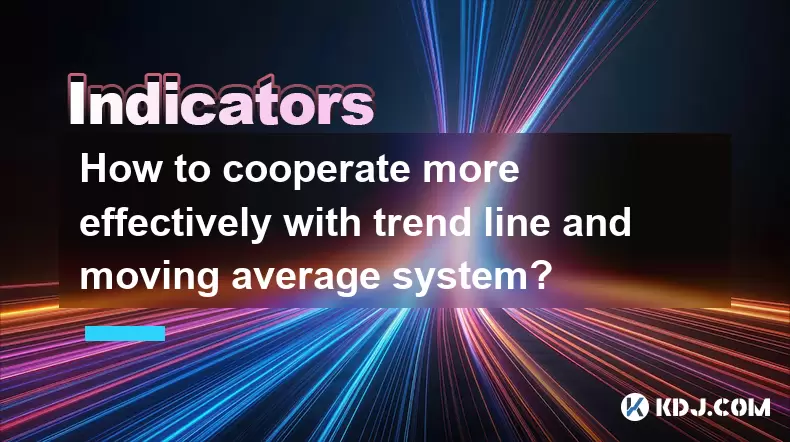
In the world of cryptocurrency trading, understanding and effectively utilizing technical analysis tools can significantly enhance your trading strategy. Two popular tools among traders are trend lines and moving averages. When used in combination, these tools can provide a more comprehensive view of market trends and potential price movements. This article will delve into how to cooperate more effectively with trend lines and the moving average system to improve your trading decisions.
Understanding Trend Lines
Trend lines are one of the most basic yet powerful tools in technical analysis. They are drawn on a chart to connect a series of prices to identify the general direction of the market. There are two main types of trend lines: ascending and descending. An ascending trend line is drawn along the lows of an uptrend, while a descending trend line is drawn along the highs of a downtrend.
To draw a trend line, you need at least two points of contact. The more points of contact a trend line has, the stronger and more reliable it is considered. For instance, a trend line that touches the price three or more times is often seen as a strong indicator of the current trend.
Understanding Moving Averages
Moving averages are another essential tool in technical analysis, used to smooth out price data and identify the direction of the trend. There are several types of moving averages, but the most commonly used are the Simple Moving Average (SMA) and the Exponential Moving Average (EMA).
The SMA calculates the average price over a specific period, giving equal weight to each price point. For example, a 50-day SMA adds up the closing prices of the last 50 days and divides by 50. The EMA, on the other hand, gives more weight to recent prices, making it more responsive to new information.
Combining Trend Lines and Moving Averages
To cooperate more effectively with trend lines and moving averages, you need to understand how these tools can complement each other. Trend lines provide a visual representation of the market's direction, while moving averages offer a smoother view of the trend and help identify potential entry and exit points.
When using these tools together, you can look for instances where the price respects both the trend line and the moving average. For instance, if the price is above an ascending trend line and also above a rising moving average, it confirms a strong uptrend. Conversely, if the price is below a descending trend line and also below a falling moving average, it confirms a strong downtrend.
Identifying Entry and Exit Points
One of the key benefits of combining trend lines and moving averages is the ability to identify more reliable entry and exit points. Here’s how you can do it:
Entry Points: Look for instances where the price touches the trend line and is also near the moving average. If the price bounces off the trend line and moves back above the moving average, it could be a good entry point for a long position. Conversely, if the price breaks below the trend line and the moving average, it might be a good entry point for a short position.
Exit Points: For exiting a position, you can use the trend line and moving average as a guide. If you are in a long position and the price breaks below the trend line and the moving average, it might be time to exit. Similarly, if you are in a short position and the price breaks above the trend line and the moving average, it could be a signal to close the position.
Using Multiple Time Frames
To enhance the effectiveness of your strategy, consider using multiple time frames. Short-term traders might use shorter time frames like 1-hour or 4-hour charts, while long-term traders might focus on daily or weekly charts. By analyzing the same asset on different time frames, you can get a more comprehensive view of the trend.
For instance, if you see an uptrend on both the daily and 4-hour charts, and the price is above both the trend line and the moving average on both time frames, it provides a stronger confirmation of the trend. This multi-time frame analysis can help you make more informed trading decisions.
Practical Example: Trading Bitcoin
Let’s apply these concepts to trading Bitcoin (BTC). Suppose you are analyzing the daily chart of BTC/USD and notice an ascending trend line that has been respected multiple times. You also see that the 50-day SMA is rising and the price is consistently above it.
- Step 1: Draw the ascending trend line connecting the lows of the recent uptrend.
- Step 2: Plot the 50-day SMA on the chart.
- Step 3: Look for instances where the price touches the trend line and is near the 50-day SMA.
- Step 4: If the price bounces off the trend line and moves back above the 50-day SMA, consider entering a long position.
- Step 5: Set your stop-loss just below the trend line to manage risk.
- Step 6: Monitor the price action. If the price breaks below the trend line and the 50-day SMA, consider exiting the position.
By following these steps, you can use trend lines and moving averages to make more informed trading decisions on Bitcoin.
FAQs
Q: Can trend lines and moving averages be used on any cryptocurrency?
A: Yes, trend lines and moving averages can be applied to any cryptocurrency. However, the effectiveness of these tools can vary depending on the liquidity and volatility of the specific cryptocurrency you are trading.
Q: How do I choose the right time frame for my trading strategy?
A: The choice of time frame depends on your trading style. Short-term traders might prefer shorter time frames like 1-hour or 4-hour charts, while long-term traders might focus on daily or weekly charts. It's important to align your time frame with your trading goals and risk tolerance.
Q: Are there any other indicators that can be used in conjunction with trend lines and moving averages?
A: Yes, other indicators such as the Relative Strength Index (RSI) and the Moving Average Convergence Divergence (MACD) can be used alongside trend lines and moving averages to provide additional confirmation of trends and potential reversal points.
Q: How often should I redraw my trend lines?
A: Trend lines should be redrawn whenever the price action invalidates the previous trend line. This could happen if the price breaks through the trend line with significant momentum or if the trend line no longer fits the current price action. Regularly reviewing and adjusting your trend lines ensures they remain relevant to the current market conditions.
Disclaimer:info@kdj.com
The information provided is not trading advice. kdj.com does not assume any responsibility for any investments made based on the information provided in this article. Cryptocurrencies are highly volatile and it is highly recommended that you invest with caution after thorough research!
If you believe that the content used on this website infringes your copyright, please contact us immediately (info@kdj.com) and we will delete it promptly.
- Cryptos to Watch in 2025: Punisher Coin, Chainlink, and the Altcoin Arena
- 2025-07-27 18:30:13
- Bitcoin, Altcoins, Rebound: Navigating the Crypto Comeback Trail
- 2025-07-27 18:30:13
- Ethereum, Bitcoin, and Altcoins: A Shift in Crypto Tides?
- 2025-07-27 19:10:13
- Windtree Therapeutics' Bold BNB Strategy: A $520 Million Crypto Play
- 2025-07-27 19:10:13
- Solana, Staking, and Unilabs: What's the Buzz in the Crypto Space?
- 2025-07-27 16:50:13
- VeChain, HBAR, Remittix: Navigating the Crypto Landscape in 2025
- 2025-07-27 17:10:12
Related knowledge
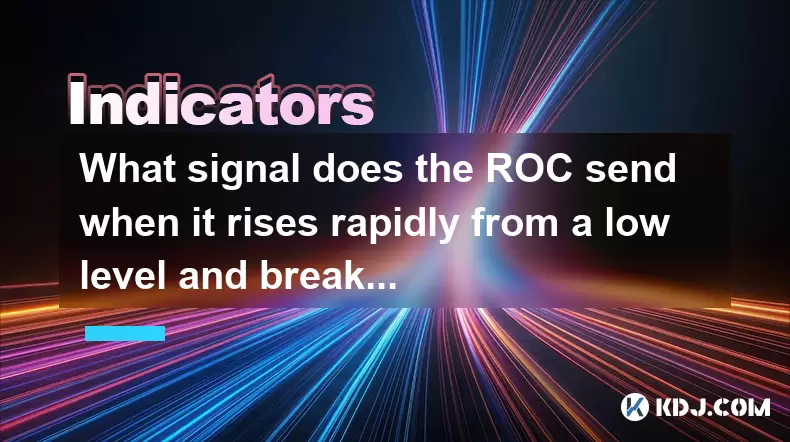
What signal does the ROC send when it rises rapidly from a low level and breaks through the zero axis?
Jul 27,2025 at 10:15am
Understanding the Rate of Change (ROC) IndicatorThe Rate of Change (ROC) is a momentum-based oscillator used in technical analysis to measure the perc...
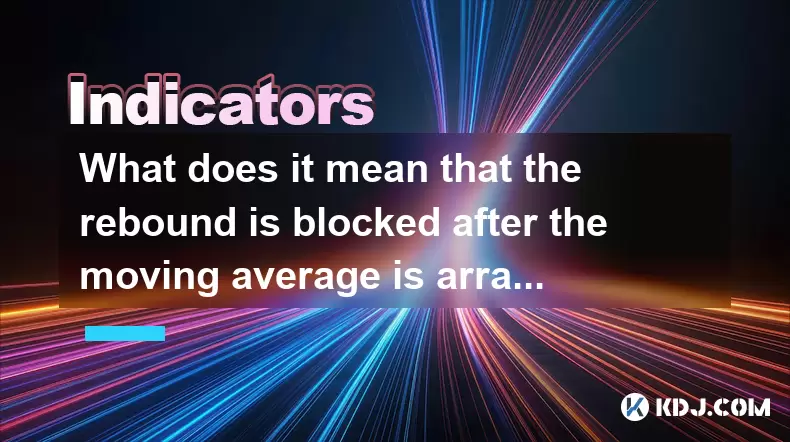
What does it mean that the rebound is blocked after the moving average is arranged in a short position for the first time?
Jul 26,2025 at 10:51am
Understanding the Short-Term Moving Average ConfigurationWhen traders refer to a 'short position arrangement' in moving averages, they are describing ...
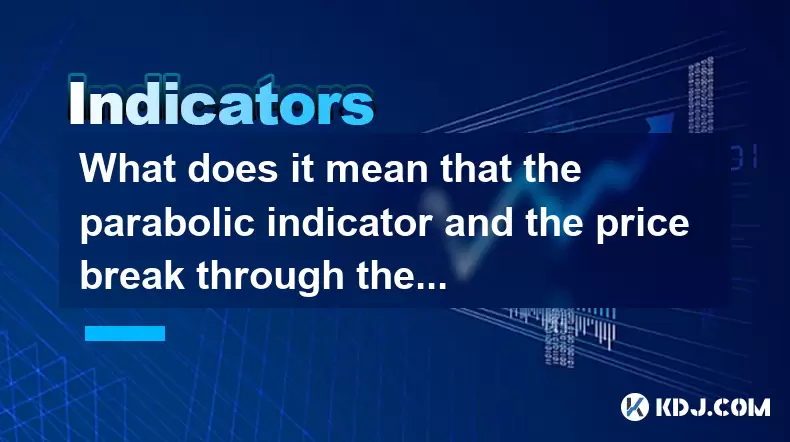
What does it mean that the parabolic indicator and the price break through the previous high at the same time?
Jul 26,2025 at 07:22pm
Understanding the Parabolic Indicator (SAR)The Parabolic SAR (Stop and Reverse) is a technical analysis tool developed by J. Welles Wilder to identify...
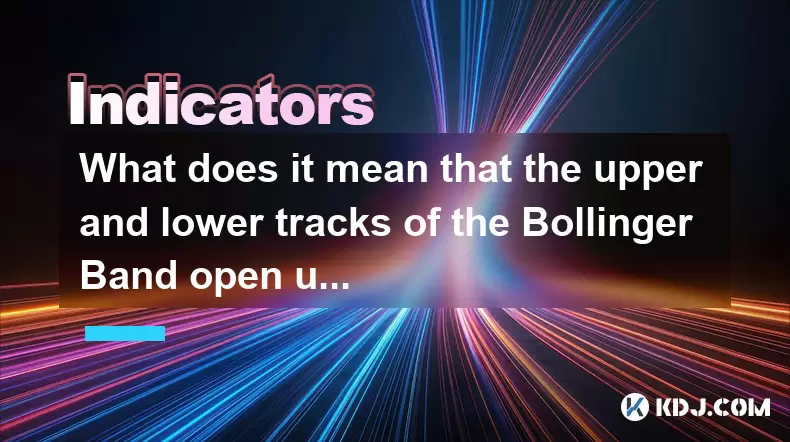
What does it mean that the upper and lower tracks of the Bollinger Band open upward at the same time?
Jul 27,2025 at 02:49pm
Understanding the Bollinger Band StructureThe Bollinger Band is a widely used technical analysis tool developed by John Bollinger. It consists of thre...
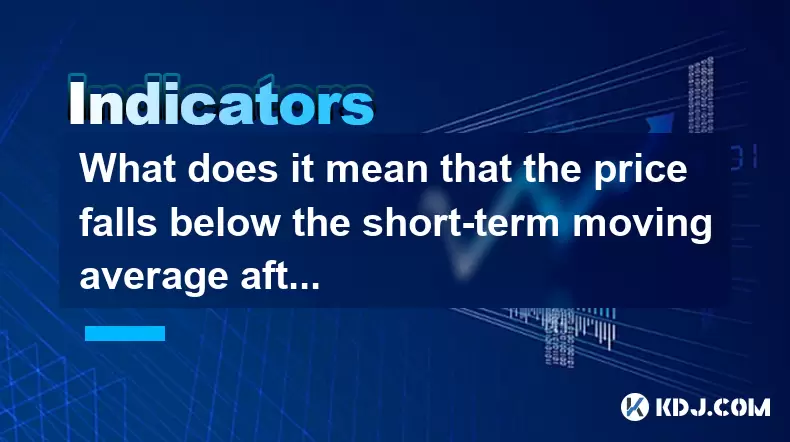
What does it mean that the price falls below the short-term moving average after the RSI top divergence?
Jul 26,2025 at 11:01pm
Understanding RSI Top Divergence in Cryptocurrency TradingThe Relative Strength Index (RSI) is a momentum oscillator widely used in cryptocurrency tra...
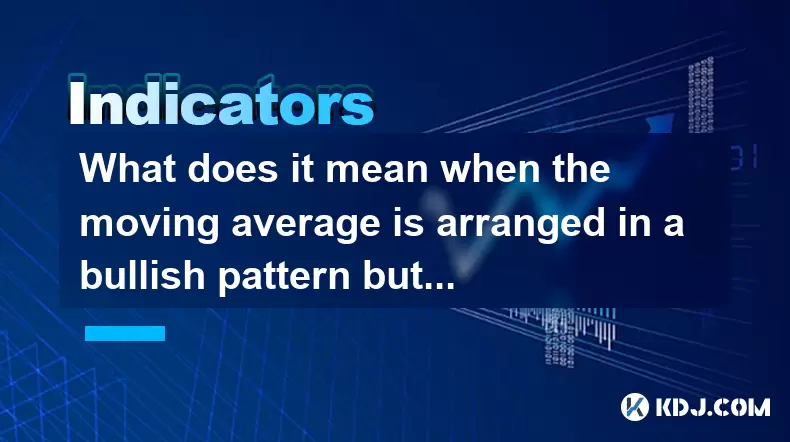
What does it mean when the moving average is arranged in a bullish pattern but the MACD bar is shortened?
Jul 27,2025 at 06:07am
Understanding the Bullish Moving Average PatternWhen traders observe a bullish moving average pattern, they typically refer to a configuration where s...

What signal does the ROC send when it rises rapidly from a low level and breaks through the zero axis?
Jul 27,2025 at 10:15am
Understanding the Rate of Change (ROC) IndicatorThe Rate of Change (ROC) is a momentum-based oscillator used in technical analysis to measure the perc...

What does it mean that the rebound is blocked after the moving average is arranged in a short position for the first time?
Jul 26,2025 at 10:51am
Understanding the Short-Term Moving Average ConfigurationWhen traders refer to a 'short position arrangement' in moving averages, they are describing ...

What does it mean that the parabolic indicator and the price break through the previous high at the same time?
Jul 26,2025 at 07:22pm
Understanding the Parabolic Indicator (SAR)The Parabolic SAR (Stop and Reverse) is a technical analysis tool developed by J. Welles Wilder to identify...

What does it mean that the upper and lower tracks of the Bollinger Band open upward at the same time?
Jul 27,2025 at 02:49pm
Understanding the Bollinger Band StructureThe Bollinger Band is a widely used technical analysis tool developed by John Bollinger. It consists of thre...

What does it mean that the price falls below the short-term moving average after the RSI top divergence?
Jul 26,2025 at 11:01pm
Understanding RSI Top Divergence in Cryptocurrency TradingThe Relative Strength Index (RSI) is a momentum oscillator widely used in cryptocurrency tra...

What does it mean when the moving average is arranged in a bullish pattern but the MACD bar is shortened?
Jul 27,2025 at 06:07am
Understanding the Bullish Moving Average PatternWhen traders observe a bullish moving average pattern, they typically refer to a configuration where s...
See all articles

























































































